Japan Pavilion - Takahiro Iwasaki. Turned Upside Down, It's a Forest

Takahiro Iwasaki, drawing
Dal 13 May 2017 al 26 November 2017
Venezia
Luogo: Giardini Biennale
Indirizzo: Giardini
Curatori: Meruro Washida
Sito ufficiale: http://2017.veneziabiennale-japanpavilion.jp/en/
Takahiro Iwasaki was born in the Hiroshima Prefecture where he is also currently based. This solo exhibition presents a selection of three-dimensional works created using everyday familiar objects including towels, books, and plastic rubbish. Characteristic of Iwasaki’s works is his fine handiwork by which he transforms his materials, such as creating steel towers from the threads pulled out of towels and construction cranes from bookmark strings attached to books. His use of these everyday objects draw influence from the numerous artifacts housed in the Hiroshima Peace Memorial Museum, conveying the instant changes in the forms of daily necessities as a consequence of the atomic bomb. Furthermore, his use of “figurative representation” can not only be described as a traditionally “Japanese” technique, but is a conscious decision that is based on the significant turnabout in Hiroshima’s position before and after the war, from a military city into a city of peace. Iwasaki’s method of making small interventions to have a remarkable impact on a large scale is that which also relates to Hiroshima’s experience of the atomic bomb, and how the power of microscopic atoms had resulted in the annihilation of the city.
For his works Iwasaki has selected motifs of both old and new buildings in the coastal regions of Japan, including a traditional shrine built above the sea, chemical plants that stand along Hiroshima’s coast, as well as oilrigs. Reflection Model (Ship of Theseus) is a new work based on the motif of a shrine reflecting on the surface of water, however since the reflected image is conveyed without fluctuation, it appears as an unrealistic representation that captures a fleeting and stationary moment in time and space. The fact that the shrine is depicted in its broken state after the typhoon is a conscious decision on Iwasaki’s part, who focuses on how its structure is made to protect its important areas by enabling sections of it to be intentionally destroyed when inflicted with external force, thus eluding any substantial damage. This method of elusion by accepting the circumstances presented is one that can be said to illustrate the Japanese way of confronting nature.
From issues of nuclear energy and the development of resources, to chemical plants that despite supporting the high growth of the postwar economy had been a serious cause for pollution, Iwasaki’s works shed light on the various challenges and situations confronted by Japan’s rural regions, and through them present an image of Japan from a different and distinguished perspective. The exhibition’s title, “Turned Upside Down, It’s a Forest” is in reference to a text written by Venetian novelist Tiziano Scarpa, describing how the city of Venice is built on an infinite number of stakes driven into the lagoon. The exhibition communicates the importance of changing one’s perspective, and invites the viewers to embrace different ways of looking.
Meruro Washida (Curator)
Takahiro Iwasaki was born in Hiroshima Prefecture in 1975, and currently lives and works in the same prefecture. He received his Ph.D., Art from the Graduate School of Arts, Hiroshima City University, and completed the M.F.A. program at the Edinburgh College of Art.
Iwasaki held a solo exhibition at the Asia Society in New York in 2015, and solo exhibitions at the Kurobe City Art Museum and the Oyama City Kurumaya Art Museum in the same year. He has also participated in international exhibitions including the 10th Lyon Biennale (2009), Yokohama Triennale (2011), 7th Asia Pacific Triennale (2012), 2013 Asian Art Biennale (National Taiwan Museum of the Arts), 8th Shenzhen Sculpture Biennale (2014), as well as numerous group exhibitions including the Roppongi Crossing 2007 ? Future Beats in Japanese Contemporary Art (Mori Art Museum, 2007), Happiness in Everyday Life (Contemporary Art center, Mito Art Tower, 2008), trans×form (Aomori Contemporary Art Center, 2013), and Nissan Art Award 2015 (BankART Studio NYK).
https://urano.tokyo/en/artists/iwasaki_takahiro/
Meruro Washida, curator at the 21st Century Museum of Contemporary Art, Kanazawa, was born in Kyoto in 1973. He Completed the Master’s program in art history at the University of Tokyo.
Washida plans contemporary art and architecture exhibitions based on themes such as local communities and participation. Major projects include solo exhibitions for Kazuyo Sejima + Ryue Nishizawa / SANAA (2005), Atelier Bow-Wow (2007), Jeppe Hein (2011), Shimabuku (2013), and Mitsunori Sakano (2016), and group exhibitions such as Kanazawa Art Platform 2008 (all of which were under the 21st Century Museum of Contemporary Art, Kanazawa).
SCARICA IL COMUNICATO IN PDF
COMMENTI

-
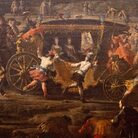 Dal 20 December 2025 al 20 April 2026
Caserta | Reggia di Caserta
Dal 20 December 2025 al 20 April 2026
Caserta | Reggia di Caserta
Regine: trame di cultura e diplomazia tra Napoli e l’Europa
-
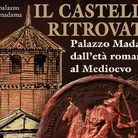 Dal 19 December 2025 al 23 March 2026
Torino | Palazzo Madama - Museo Civico d’Arte Antica
Dal 19 December 2025 al 23 March 2026
Torino | Palazzo Madama - Museo Civico d’Arte Antica
Il castello ritrovato. Palazzo Madama dall’età romana al medioevo
-
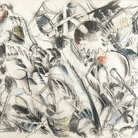 Dal 17 December 2025 al 19 January 2026
Roma | Palazzo della Cancelleria
Dal 17 December 2025 al 19 January 2026
Roma | Palazzo della Cancelleria
De Humana Mensura di Linda Karshan
-
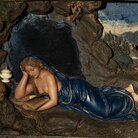 Dal 18 December 2025 al 12 April 2026
Firenze | Gallerie degli Uffizi
Dal 18 December 2025 al 12 April 2026
Firenze | Gallerie degli Uffizi
Cera una volta. Sculture dalle collezioni medicee
-
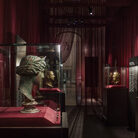 Dal 11 December 2025 al 9 April 2026
Firenze | Museo Archeologico Nazionale di Firenze
Dal 11 December 2025 al 9 April 2026
Firenze | Museo Archeologico Nazionale di Firenze
Icone di Potere e Bellezza
-
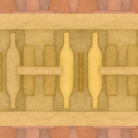 Dal 11 December 2025 al 11 January 2026
Roma | Palazzo Esposizioni Roma
Dal 11 December 2025 al 11 January 2026
Roma | Palazzo Esposizioni Roma
Giorgio Morandi nella Collezione Eni. Un viaggio attraverso la storia culturale del cane a sei zampe e l’eredità di Enrico Mattei


